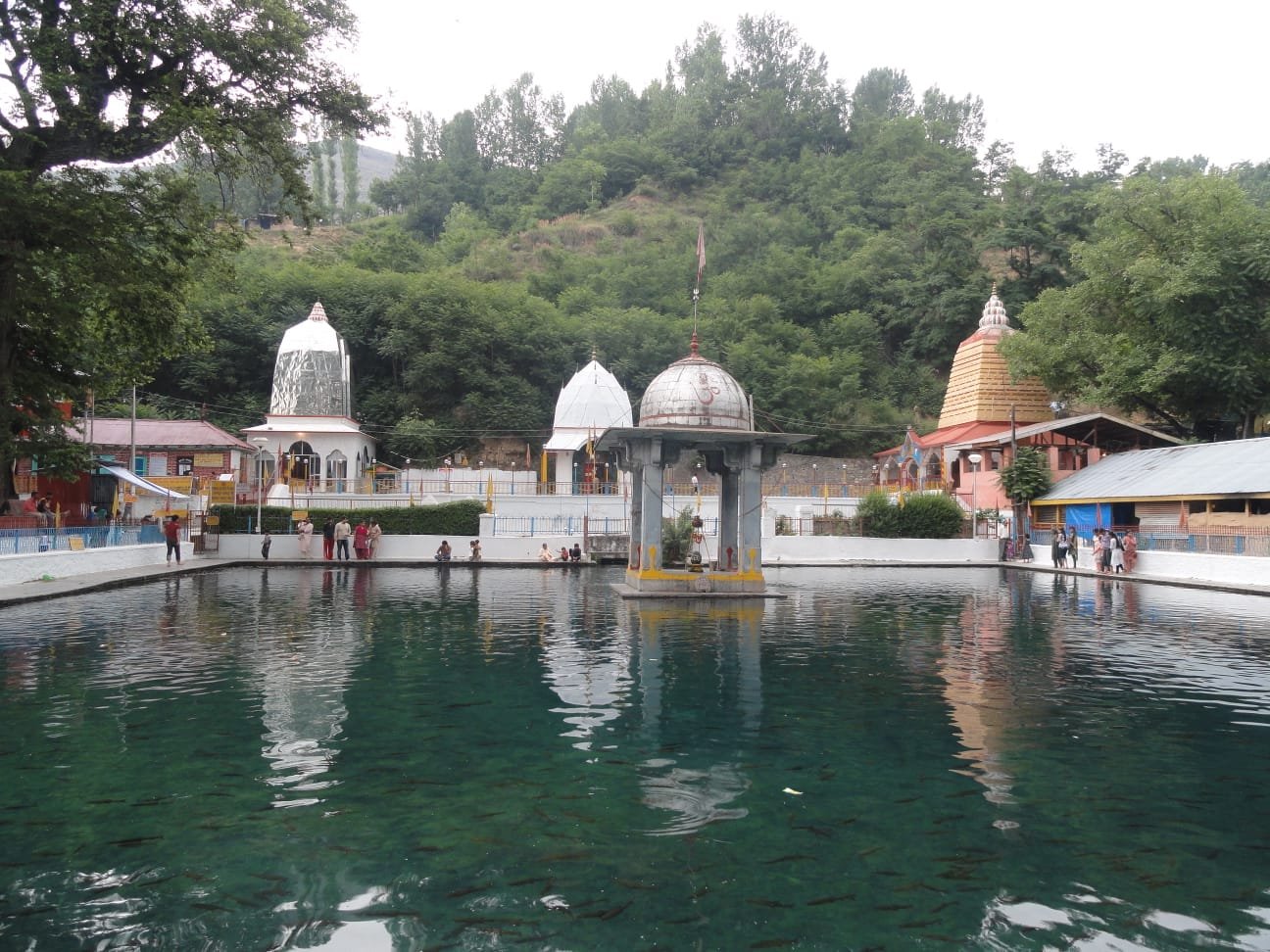The Sacred Martand Temples of Mattan, Kashmir
Nestled in the village of Mattan (or Bavan) in Anantnag district, South Kashmir, the ancient Martand temples stand as a testament to the region’s spiritual legacy. Located approximately 61 km from Srinagar and 6 km from Anantnag, this revered pilgrimage site lies along the route to Pahalgam and the holy Amarnath Cave. Renowned as one of Kashmir’s oldest Hindu shrines, it holds immense significance for devotees of Lord Vishnu Surya, worshipped here in his radiant form as Martanda (Sun God). The site’s sanctity rivals that of Haridwar, drawing pilgrims nationwide to its interconnected temples and sacred springs.
Etymology and Historical Significance
The modern name Mattan derives from the Sanskrit Martanda (meaning “Sun God”), while Bavan originates from Bhavana (“sacred dwelling”). In antiquity, the site was revered as Vishnu Bhawan or Macch Bhawan (“Abode of Fish”), reflecting its association with divine and natural elements. Today, the Martand Tirtha encompasses numerous shrines, including:
-
The ancient Martand Temple beside the Vimala and Kamala springs.
-
Adi Shakti Mata Bhargshika Temple, perched atop a cliff overlooking the main complex.
-
Temples dedicated to Bheema Devi, Shri Ganganand, Baswati, and Shree Bhawani.
-
A cave temple of Lord Shiva near Bumzoo and the ruined Sun Temple on Mattan Wudar plateau.
-
Sangam Tirtha, the sacred confluence of the Lamboderi and Chaka Nadi rivers.
While many shrines remain lesser-known, pilgrims often focus on the central Martand complex and its legendary springs.
Legends of Martanda
According to scriptures like the Martanda Katha and Markandeya Purana, the Sun God Martanda was born as the 13th son of Aditi and Rishi Kashyapa. Unlike his twelve elder siblings (the Adityas), Martanda was cast into the waters of Satisar (ancient Kashmir) in a lifeless egg after a dispute between his parents. Centuries later, to vanquish the demon Jalobhava, Kashyapa drained Satisar with divine aid. Discovering the egg, he invoked Lord Vishnu, who split it with his Sudarshan Chakra, releasing radiant light (Martanda) and creating the Vimala and Kamala springs. The resulting flames struck four sites, manifesting as the Four Shaktis: Bhargshika, Bheema Devi, Baswati, and Shree Bhawani.
Another legend ties Martanda’s sanctity to Goddess Parvati, who urged Lord Shiva to elevate the site’s spiritual stature. Additionally, pilgrims completing the Amarnath Yatra traditionally feed sacred fish in Martand’s springs to fulfill their journey.
The Sacred Complex
The heart of Martand Tirtha lies beneath Devi Bal Mountain, home to:
-
Vimala and Kamala Kund: Twin springs teeming with sacred fish, believed to carry blessings. A Shiva temple rises from Kamala Kund’s waters.
-
Temples: Ancient shrines to Martanda, Durga, Radha-Krishna, Ram-Lakshman-Sita, Ganesha, and a modern temple honoring the 12 Adityas (Data, Arima, Mitra, Varun, Inder, Vivaswan, Pusha, Parjney, Anushman, Bug, Trusht, and Vishnu).
-
Rituals: Devotees bathe in a stone-channeled tank fed by the springs before worship. Holy water is often carried home for blessings.
The complex includes a dharamshala for pilgrims and features two gateways, though only one remains accessible today.
Bhargshika Temple and Sangam Tirtha
The Adi Shakti Bhargshika Temple, atop Devi Bal Mountain, enshrines a sacred rock (Shilla) symbolizing the primordial feminine energy. Legends claim the mountain was struck by flames from Martanda’s egg, with its flowing blood forming the Sun God’s symbolic “hair.”
At Sangam Tirtha, the confluence of the Lamboderi (from Shesh Nag) and Chaka Nadi rivers, Hindus perform ancestral rites (Pinddhan, Shradh) for salvation. These rituals are deemed most auspicious during Malmass (a festival recurring every 2.5 years), eclipses, and Sundays.
Festivals and Rituals
-
Magh Shukla Saptami (February): Celebrates Martanda’s birth with fervent prayers and hymns.
-
Malmass: Thousands gather at Sangam Tirtha for ancestral rites, endorsed by texts like the Nilmat Purana as a path to liberation.
Cultural Legacy
Martand’s enduring spiritual aura, rooted in Kashmir’s Vedic past, continues to inspire devotion. Its blend of myth, nature, and architecture makes it a cornerstone of Hindu heritage, preserving stories of divine intervention and human faith.
—Compiled from the works of Shri Rubon Saproo, preserving the legacy of Kashmir’s sacred spaces.

